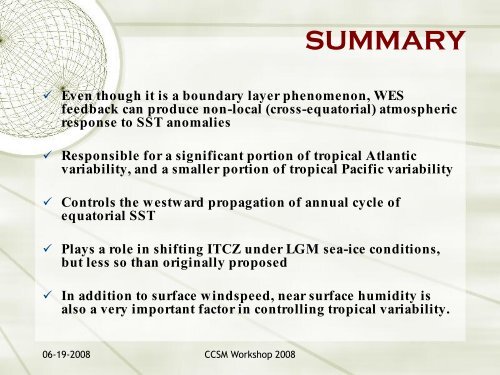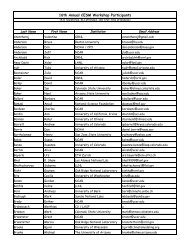The role of wind-evaporation-SST feedback in tropical variability
The role of wind-evaporation-SST feedback in tropical variability
The role of wind-evaporation-SST feedback in tropical variability
You also want an ePaper? Increase the reach of your titles
YUMPU automatically turns print PDFs into web optimized ePapers that Google loves.
06-19-2008 CCSM Workshop 2008<br />
SUMMARY<br />
Even though it is a boundary layer phenomenon, WES<br />
<strong>feedback</strong> can produce non-local (cross-equatorial) atmospheric<br />
response to <strong>SST</strong> anomalies<br />
Responsible for a significant portion <strong>of</strong> <strong>tropical</strong> Atlantic<br />
<strong>variability</strong>, and a smaller portion <strong>of</strong> <strong>tropical</strong> Pacific <strong>variability</strong><br />
Controls the westward propagation <strong>of</strong> annual cycle <strong>of</strong><br />
equatorial <strong>SST</strong><br />
Plays a <strong>role</strong> <strong>in</strong> shift<strong>in</strong>g ITCZ under LGM sea-ice conditions,<br />
but less so than orig<strong>in</strong>ally proposed<br />
In addition to surface <strong>w<strong>in</strong>d</strong>speed, near surface humidity is<br />
also a very important factor <strong>in</strong> controll<strong>in</strong>g <strong>tropical</strong> <strong>variability</strong>.
















